What is ETD and ETA in Shipping?
Those in the shipping, warehousing, or supply chain business may be quite familiar with the acronyms, ETD and ETA.
Organizations and businesses depend on these two for their planning and scheduling.
What are EDT and ETA in Shipping?
ETD is the abbreviated version of Expected or Estimated Time of Departure while ETA stands for Expected or Estimated Time of Arrival.
ETD could be the estimated departure time of the shipper’s cargo on board a vessel or that of the transport vessel itself. It could be the estimated departure time of anything that could be waiting for dispatch.
Similarly, in ETA, arrival could be that of the vessel or the cargo.
An ETD normally means the expected date of departure while ETA means the expected date of arrival of an ocean carrier or cargo.
The time is not mentioned in most cases as delays and early arrivals of vessels and cargo are unpredictable.
ETD and ETA are only the indicative dates and are not binding on the ocean carrier, clearing or freight forwarding agent.
Where can I find the ETD and ETA of a shipment?
The estimated times of departure and arrival are usually mentioned in the booking confirmation issued by the ocean carrier or the freight forwarder. It is an acknowledgement for the booking of cargo by ship (or any other mode of transport).
A booking confirmation will have the booking confirmation number, description and quantity of the load to be shipped, the equipment that is used for the shipment, and the journey plan.
The equipment means the type of container or pallet that is used to hold the cargo. A typical journey plan would include the ETD and ETA of the carrier.
Confirmation of Booking
A booking confirmation is a valid contract between the carrier and the shipper. It is issued by the carrier or freight forwarder to the shipper.
The shipper could be the consignor or the consignee.
The booking confirmation of a container would normally include the following information:
- Booking party
- Booking confirmation number
- Shipper name
- Place of return of the empty container or containers
- Dangerous goods information
- ETD
- Vessel name
- Port of discharge
- ETA
- Trans-shipment ports if any
- Container number and description
- Details of the trucker
- Date of booking
- Authorized signature
The booking confirmation number is usually mentioned on all documents and correspondences related to a shipment.
How are ETD and ETA calculated?
ETD and ETA depend on factors such as the ship’s schedule, stops for bunkering and maintenance, and also depending on known conditions at the various ports – at origin and en route, such as labour problems, berthing congestions, etc.
A carrier may change the given ETD and ETA based on any of the above factors. Weather and rough seas are other reasons for delayed departures or late arrivals of ocean vessels.
Some companies that deal in marine delay insurance classify these factors as shore-side factors and ship-related factors.
Shore-side factors are those conditions that affect the departure of a vessel such as labour unrest, traffic congestion, transport problems at port, infrastructure breakdown, etc.
Ship-related factors are those which affect the arrival of the vessel at a port such as weather delays, breakdown of ship’s machinery en route, etc.
While ETD and ETA are approximations, the Actual Time of Departure (ATD) and Actual Time of Arrival (ATA) show the actual time of the vessel’s departure and arrival at a port.
The variances between ETD – ATD and ETA – ATA over a prolonged period is not a desirable situation and it has to be corrected accordingly.
ATD and ATA are important in inventory forecasting, manufacturing processes, project management, etc. ATD or ATA are used in the calculation of the lead time of goods.
Importance of Lead Time, ETD, and ETA
In shipping and cargo movement, a lead time is a total time taken for a ship or cargo to move from point A to point B (origin to destination of the vessel or cargo) expressed in the number of days.
Accurate lead times are critical in inventory forecasting. Inventory forecasting is the projection of inventory requirements of a business at a future time.
It uses data such as stocks on hand, sales and demand, inventory lead time, and other factors to arrive at the forecasted figures. Accurate and up-to-date data helps to produce accurate forecasts.
Of these data, the inventory lead time can be considered the most unpredictable since most of the factors causing delays in the departure or arrival of vessels (ATD and ATA) are hard to predict.
Predictive models to arrive at projected delays are not practical. However, based on historic trends, organizations can factor in a certain number of days in their inventory forecasting models to cover these unforeseen delays.
Lead time is a critical key performance indicator (KPI) measure for supply chain and logistics companies. Lead time figures are usually broken down into goods ready days, transit days, and clearance and delivery days.
Goods ready days show the number of days taken by the supplier to get the goods ready and have them delivered to the port for shipment.
Transit days show the number of days taken for the transit of the cargo from the port of origin to the port of destination or discharge.
The Clearance and delivery days show the number of days taken for the goods to be customs cleared from port and delivered to the customer’s premises.
All these days are the actual days taken for the movement of cargo from its point of origin at the supplier’s warehouse to the customer’s storage location.
Analysts of the ocean carrier compare the ETD and ETA given with the actual times of departure and arrival.
They look for abnormal or large variances, find the reasons for these variances, and try to set them right. Variances have to be corrected for an optimum supply chain.
In shipping, it is important to note that the estimated time of delivery (ETD) is from the port of origin and the estimated time of arrival (ETA) is to the port of destination. ETD and ETA do not mean that it is from the shipper’s premises to the consignee’s doorstep unless mentioned specifically.
Can Compensation be Claimed on Delayed Departures?
When the shipper books cargo on an ocean vessel, the ocean carrier has the responsibility to take the cargo on the vessel that is mentioned on the booking confirmation.
The booking confirmation will also show the ETD of the vessel. In some cases, the ETA is also shown.
In the event of the cargo missing the sailing for no fault of the shipper, then the carrier should take the cargo in an alternative vessel latest within three days from the date of the original booking.
If it exceeds three days then, in most cases, the shipper can claim compensation from the ocean carrier for the days exceeded beyond the three days.
Compensation can be claimed only in the case of carrier haulage. It also has to meet certain conditions like full payment from the shipper or his customer to the ocean carrier, etc.
The claim for compensation has to be made by the shipper within a certain number of days as specified in the agreement with the ocean carrier. The exclusions here are, any force majeure or delays from the port.
However, the terms may vary from carrier to carrier and the shipper has to confirm this in the agreement with the ocean carrier.
Live Tracking of Vessels and Cargo
The old practice of updating the customer when the goods reach a pre-defined location has given way for live tracking of goods.
Earlier, the status of the vessel or goods between two pre-defined locations were not available, especially to the customer.
Live tracking gives clear visibility of goods and vessels in transit and therefore a realistic ETD and ETA. The movement of cargo vessels can be monitored by the shipping company and disruptive events en route avoided.
Along with the live-tracking of cargo, some companies offer additional services to their customers. Some of the services offered with live tracking of cargo are real-time monitoring of the cargo’s temperature, humidity, or shock levels. This can be very useful in the transportation of medical or hi-technology equipment, food items, etc.
Ocean carriers these days have effective Transport Management Systems (TMS) and live tracking of their vessels and the cargo that it carries. Tracking portals of ocean carriers allow the customer to see where exactly the goods consigned to them are at any given point in time.
Live tracking makes the calculation of ETD and ETA more accurate for the customer. It helps the ocean carrier or freight forwarding agent to see where delays happen and take necessary steps to reduce or even prevent the negative impact of such delays before the goods have reached their destination.
Several tools and software are available in the market today that simplifies the calculations of ETD and ETA. If used correctly, they are often very accurate and help an organization to plan.
Taking actions based on live tracking moves a company from being reactive to proactive. Customers prefer to deal with organizations that look ahead to avoid problems rather than deal with problems when they happen. Updated and accurate ETD and ETA help customers plan and manage their activities and also avoid stock-outs.
To understand the ETA forecast better, let us take a look at the following calculation based on the assumption that the ideal lead time for the journey (base days) is fifteen days.
The historic data available for the calculation (average values) is as follows:
Delay due to labor strike: 3 days
Delay due to poor weather: 2 days
Delay due to departure port congestion: 1 day
Delay due to arrival port congestion: 2 days
Delay due to extended stop for bunkering: 1 day
Delay due to malfunction of ship machinery: 2 days
Delay due to war or piracy: 3 days
Let us take the probability of occurrence of these events over the 15 days (lead time) period as follows:
Labor strike: 3%
Poor weather: 20%
Departure congestion: 10%
Arrival congestion: 15%
Extended bunkering: 5%
Technical malfunction: 10%
War or piracy: 1% (subject to variability depending on the current situation)
The probabilities are arrived at based on historic and recorded occurrences. For instance, data shows that a labour strike occurs over 10 days in a year. So, the probability that your shipment may be delayed due to a labour strike is (10/365) x 100 = 3%.
When it comes to poor weather, the objective of any shipping line would be to reduce the delay due to this by selecting better routes or including delays in the total shipping time (mentioned as 15 days in the above example).
The reason that the probability on account of poor weather is higher compared to other events is that it has a compounding effect. For example, a storm at one transhipment point might delay a vessel by 1 day.
Upon approaching the destination port, it may be low tide at the port thereby restricting entry into the port. For this reason, it has a higher probability of delaying the ship.
The calculation for the computation of ETA is as follows:
Total journey time = Base number of days + ∑(probability not in percentage x delayed days)
In the example given above, the total journey time will be calculated thus:
Total journey time equals 15 + (0.03 x 3) + (0.2 x 2) + (0.1 x 1) + (0.15 x 2) + (0.05 x 1) + (0.1 x 2) + (0.01 x 3).
Total journey time in days equals 16.7 days.
For the journey of 15 days, 1.7 days are to be accounted for various delays. As the base journey time (ideal lead time for the journey) increases, the probability of occurrences also increases, resulting in long delays.
Accurate ETD and ETA information helps the customer plan their storage space, labourers, and other operations effectively.
You might also like to read:
- Freight Forwarding Process – Everything You Wanted to Know
- NOTIFY PARTY in Shipping – Everything You Wanted To Know
- What is Demurrage and Detention in Shipping?
- Bill Of Lading in Shipping: Importance, Purpose, And Types
- Telex Release – Everything You Wanted to Know
Disclaimer: The authors’ views expressed in this article do not necessarily reflect the views of Marine Insight. Data and charts, if used, in the article have been sourced from available information and have not been authenticated by any statutory authority. The author and Marine Insight do not claim it to be accurate nor accept any responsibility for the same. The views constitute only the opinions and do not constitute any guidelines or recommendation on any course of action to be followed by the reader.
The article or images cannot be reproduced, copied, shared or used in any form without the permission of the author and Marine Insight.
Do you have info to share with us ? Suggest a correction

About Author
Hari Menon is a Freelance writer with close to 20 years of professional experience in Logistics, Warehousing, Supply chain, and Contracts administration. An avid fitness freak, and bibliophile, he loves travelling too.
Latest Maritime law Articles You Would Like:
Latest News
- What are Logistics Risks?
- How Port and Terminal Operators Can Control Emissions?
- Minimum Quantity Commitment (MQC) and Liquidated Damages in Container Shipping: Concept and Relevance
- MARPOL (The International Convention for Prevention of Marine Pollution For Ships): The Ultimate Guide
- The Ultimate Shipping Container Dimensions Guide
- A Comprehensive Overview of IMDG Code for Shipping Dangerous Goods
Subscribe To Our Newsletters
By subscribing, you agree to our Privacy Policy and may receive occasional deal communications; you can unsubscribe anytime.
Web Stories



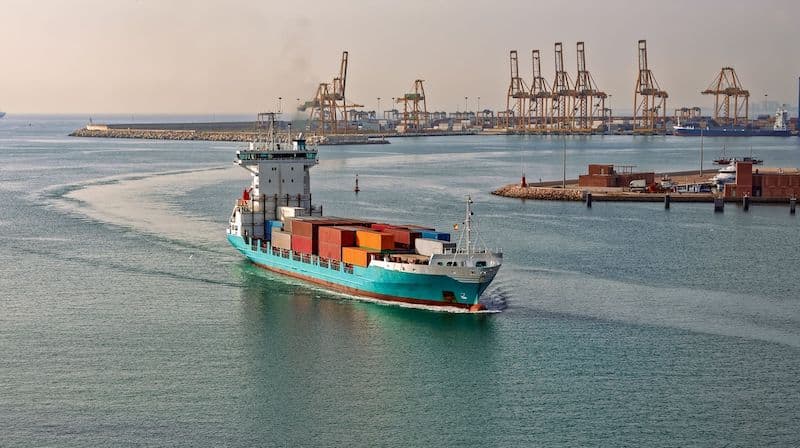
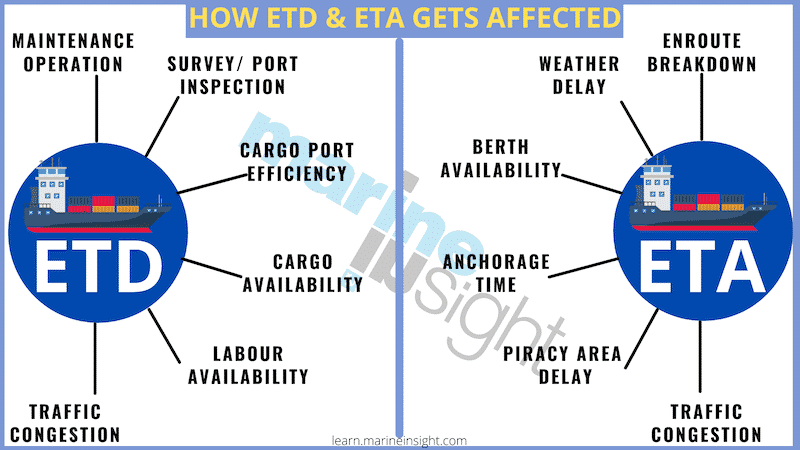
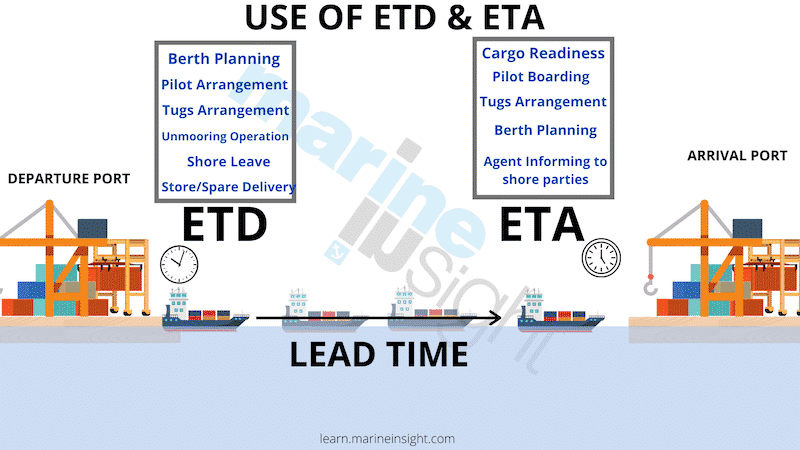

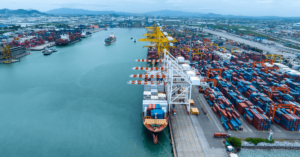






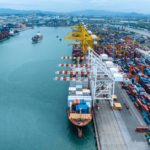








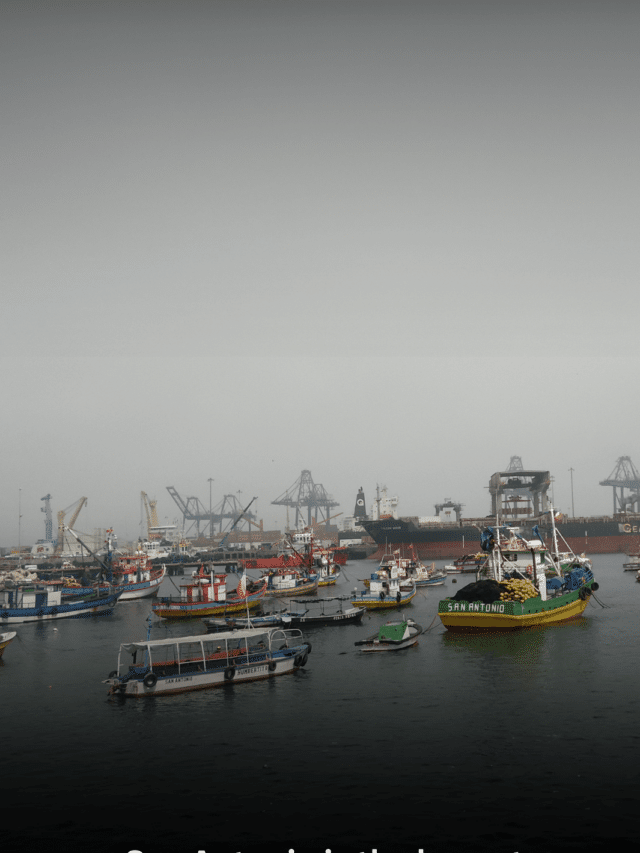
can you provide dataset in csv file?
can you provide dataset in csv file for machine learning Research Base project.
“””””” Multimodal freight travel time prediction “””””
Always understood that ETA stands for ESTIMATED time of arrival whilst ETD/ETS stands for EXPECTED time of departure/sailing. The difference is that the time of departure can be predicted more secure than the time of arrival.